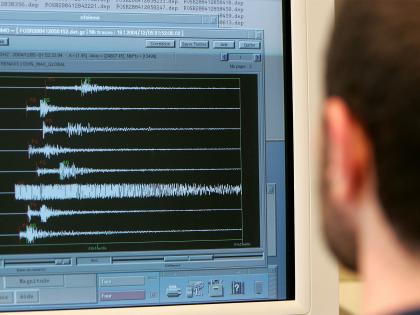Earthquake of magnitude 4.0 strikes Myanmar
By ANI | Updated: September 13, 2025 12:45 IST2025-09-13T12:43:35+5:302025-09-13T12:45:04+5:30
Naypyidaw [Myanmar], September 13 : An earthquake of magnitude 4.0 struck Myanmar on Saturday, as reported by the National ...

Earthquake of magnitude 4.0 strikes Myanmar
Naypyidaw [Myanmar], September 13 : An earthquake of magnitude 4.0 struck Myanmar on Saturday, as reported by the National Centre for Seismology (NCS).
According to the NCS, the earthquake occurred at a depth of 10 kilometres.
"EQ of M: 4.0, On: 13/09/2025 11:09:51 IST, Lat: 25.65 N, Long: 97.08 E, Depth: 10 Km, Location: Myanmar."
https://x.com/NCS_Earthquake/status/1966740655117607167
Earlier on September 4, an earthquake of magnitude 4.7 struck Myanmar. As per the NCS, the earthquake occurred at a depth of 120km.
Shallow earthquakes are generally more dangerous than deep earthquakes. This is because the seismic waves from shallow earthquakes have a shorter distance to travel to the surface, resulting in stronger ground shaking and potentially more damage to structures and greater casualties.
In the aftermath of the magnitude 7.7 and 6.4 earthquakes that struck central Myanmar on March 28, the World Health Organisation (WHO) warned of a series of rapidly rising health threats for tens of thousands of displaced people in earthquake-affected areas: tuberculosis (TB), HIV, vector- and water-borne diseases.
Myanmar is vulnerable to hazards from moderate and large magnitude earthquakes, including tsunami hazards along its long coastline. Myanmar is wedged between four tectonic plates (the Indian, Eurasian, Sunda, and Burma plates) that interact in active geological processes.
A 1,400-kilometre transform fault runs through Myanmar and connects the Andaman spreading center to a collision zone in the north called the Sagaing Fault.
The Sagaing Fault elevates the seismic hazard for Sagaing, Mandalay, Bago, and Yangon, which together represent 46 per cent of the population of Myanmar. Although Yangon is relatively far from the fault trace, it still suffers from significant risk due to its dense population. For instance, in 1903, an intense earthquake with a magnitude of 7.0 that occurred in Bago also struck Yangon.
Disclaimer: This post has been auto-published from an agency feed without any modifications to the text and has not been reviewed by an editor
Open in app